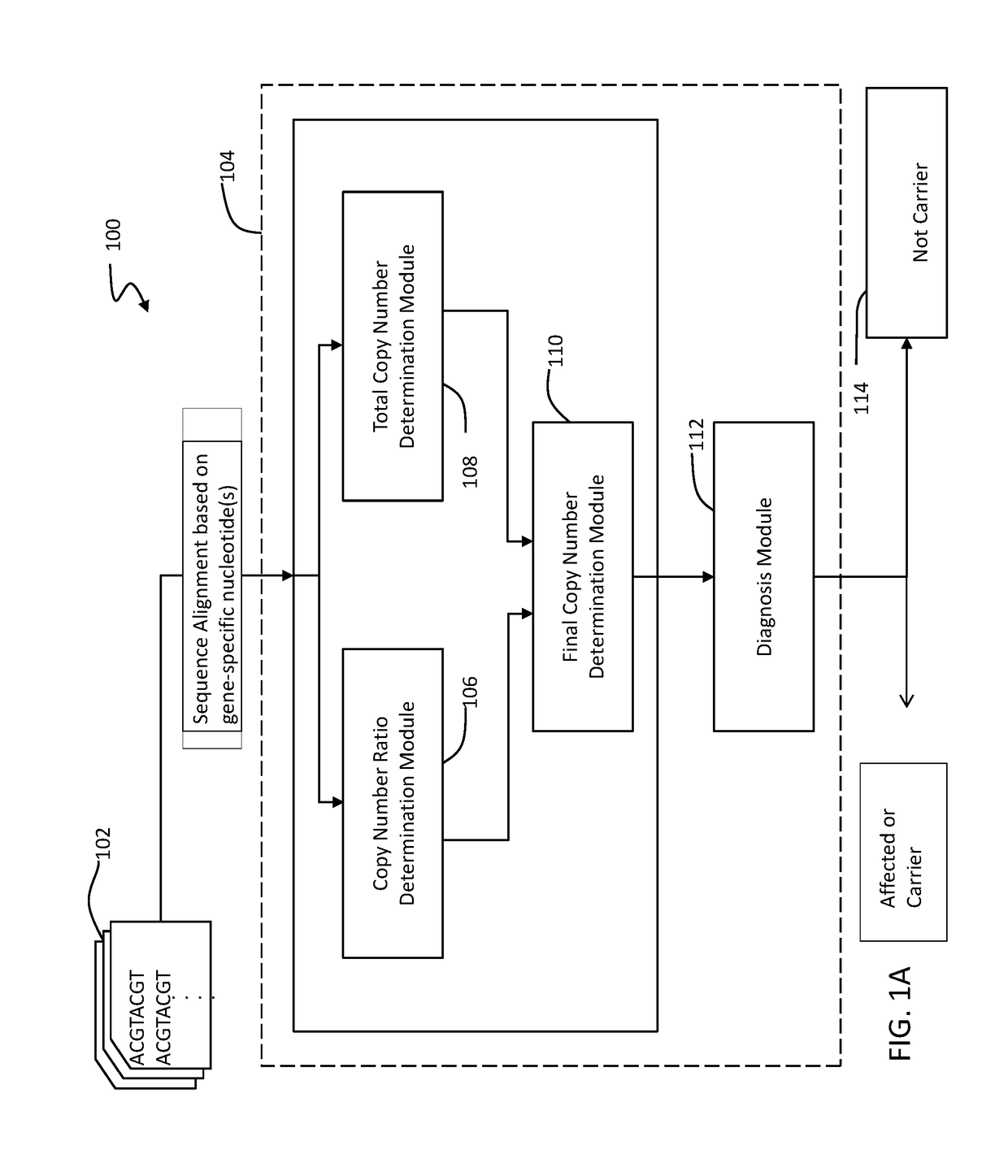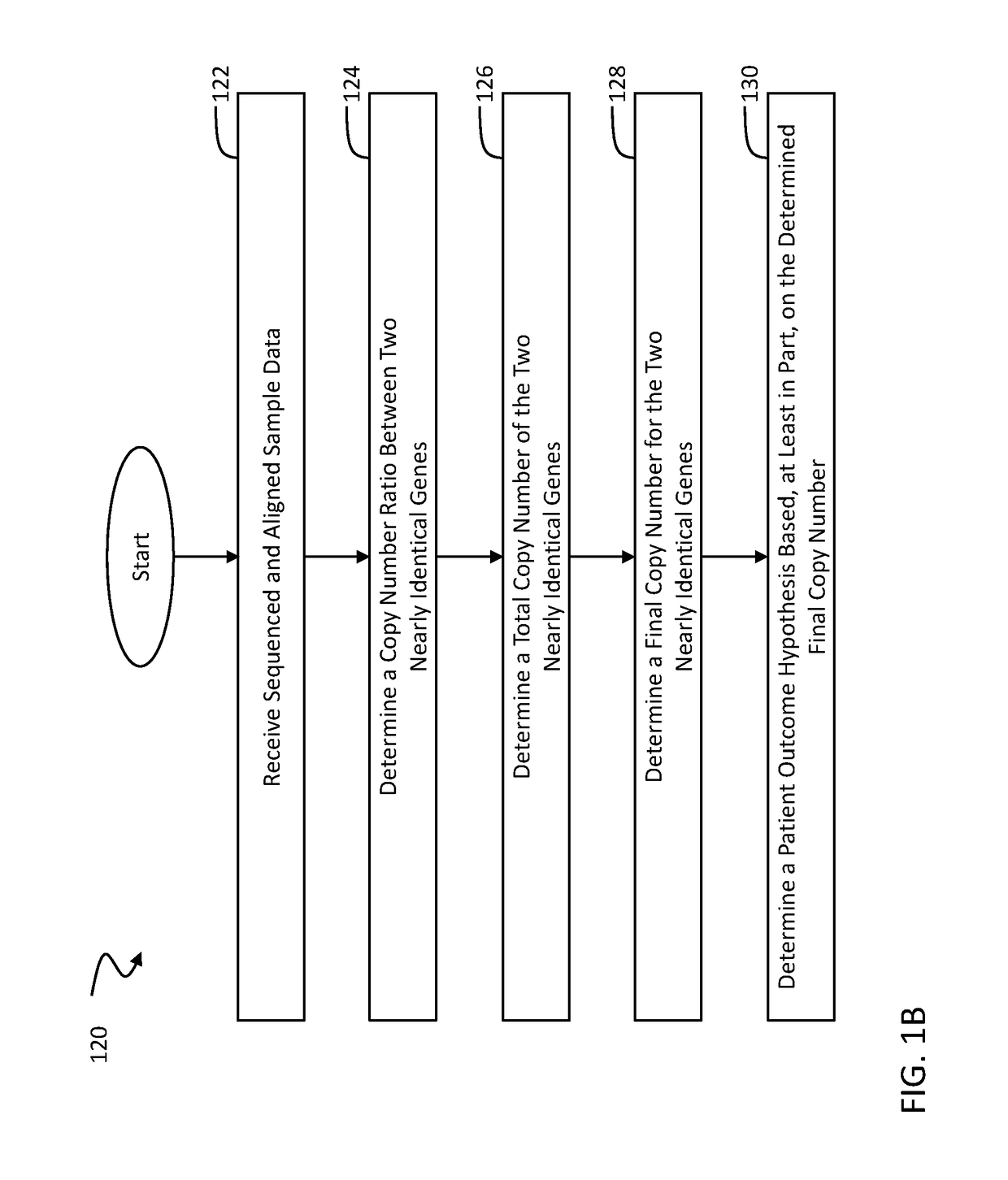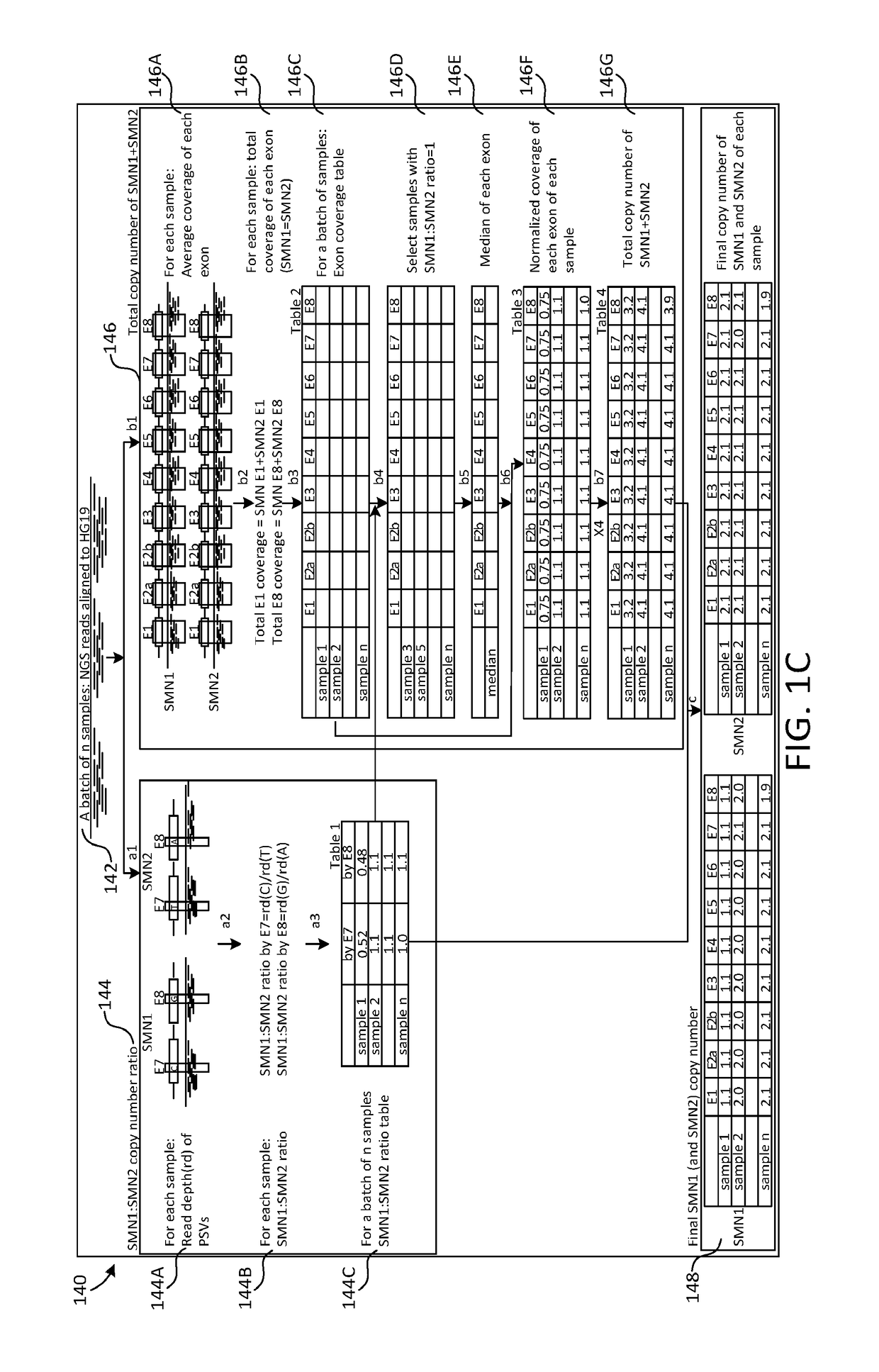A novel algorithm for smn1 and smn2 copy number analysis using coverage depth data from next generation sequencing
a copy number analysis and coverage depth technology, applied in the field of gene expression and molecular biology, can solve the problems of lack of locus-specific computational programs for genes with homologous sequences, the failure of mapping quality filtering of variants in these genes, and the general difficulty of ngs-based cnv detection for small deletions/duplications at single exons
- Summary
- Abstract
- Description
- Claims
- Application Information
AI Technical Summary
Benefits of technology
Problems solved by technology
Method used
Image
Examples
example 1
A Novel Algorithm for SMN1 and SMN2 Copy Number Analysis Using Coverage Depth Data from Next Generation Sequencing for the Detection of Spinal Muscular Atrophy (SMA) Carrier
[0053]Spinal muscular atrophy (SMA) is one of the most common autosomal recessive diseases with an incidence of ˜1 in 10,000 live births. The carrier frequency of this disease is approximately 1:40˜1:70 in different ethnic groups and population-based carrier screening is recommended by professional societies such as the ACMGG. SMA is caused by the complete loss of the survival motor neuron 1 (SMN1) protein while the number SMN2 copy gene may serve as a modifier for disease severity in affected patients. The underlying mechanism for SMN1 gene copy number change is attributed to its deletion or gene conversion. SMN1 and SMN2 are highly homologous with only five different nucleotides within the gene. The most important nucleotide that distinguishes SMN1 from SMN2 is located at +6 position in SMN1 exon 7 (c.840C>T in...
example 2
Population Carrier Screening for SMA by NGS
[0054]The present example shows population carrier screening for spinal muscular atrophy by next generation sequencing.
[0055]Materials and Methods
[0056]DNA Samples—
[0057]The analyses were performed using de-identified samples collected for carrier testing according to protocols approved by the institutional review board at the Baylor College of Medicine. DNA was extracted from whole blood using commercially available DNA isolation kits (Gentra Systems, Minneapolis, Minn.) following the manufacturer's instructions.
[0058]Capture Enrichment and Next-Generation Sequencing—
[0059]A protocol previously described (Yang, et al., 2013) using capture-based target enrichment followed by NGS was adapted for the clinical test of 158 gene carrier sequencing. Briefly, genomic DNA samples were fragmented with the use of sonication, ligated to Illumina multiplexing paired-end adapters, amplified by means of a polymerase-chain-reaction assay with the use of p...
example 3
The Next-Generation of Population-Based Spinal Muscular Atrophy Carrier Screening: Comprehensive Pan-Ethnic SMN1 Copy Number and Sequence Variant Analysis by Massively Parallel Sequencing
[0098]Introduction
[0099]Spinal muscular atrophy (SMA, MIM #253300) is a neuromuscular disorder caused by loss of motor neurons in the spinal cord and brainstem, leading to generalized muscle weakness and atrophy that impairs activities such as crawling, walking, sitting up, and controlling head movement (Emery, et al., 1976). SMA has variable expressivity with a broad range of onset and severity. In severe cases, death occurs within the first two years of life mostly due to respiratory failure (Dubowitz, 1995). It has an incidence of about 1 in 10,000 live births and a carrier frequency of about 1 / 40 to 1 / 100 in different ethnic groups, with a higher carrier frequency in Caucasians and lower carrier frequencies in African Americans and Hispanics (Swoboda, et al., 2005; Hendrickson, 2009; Prior, et a...
PUM
| Property | Measurement | Unit |
|---|---|---|
| depth(rd | aaaaa | aaaaa |
| carrier frequency | aaaaa | aaaaa |
| carrier frequencies | aaaaa | aaaaa |
Abstract
Description
Claims
Application Information
 Login to View More
Login to View More - R&D
- Intellectual Property
- Life Sciences
- Materials
- Tech Scout
- Unparalleled Data Quality
- Higher Quality Content
- 60% Fewer Hallucinations
Browse by: Latest US Patents, China's latest patents, Technical Efficacy Thesaurus, Application Domain, Technology Topic, Popular Technical Reports.
© 2025 PatSnap. All rights reserved.Legal|Privacy policy|Modern Slavery Act Transparency Statement|Sitemap|About US| Contact US: help@patsnap.com



